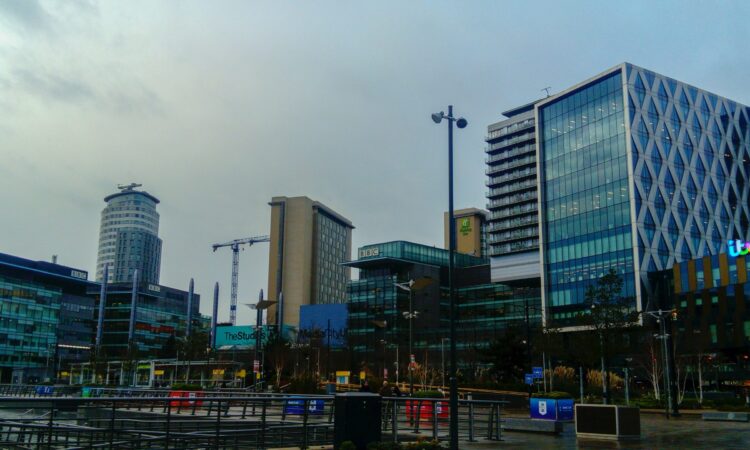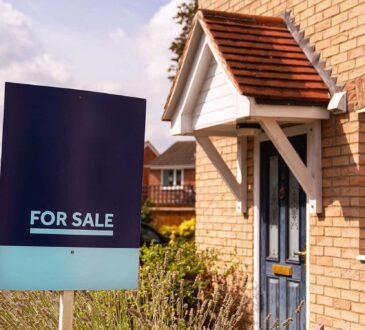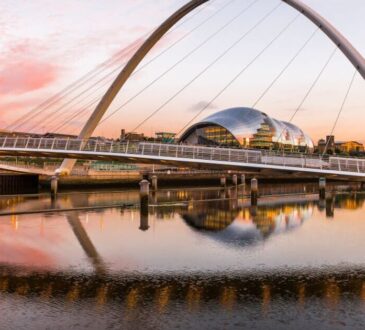
The UK property market in 2024 is experiencing a shift, largely due to declining interest rates and increased regional investment opportunities. After a sharp rise in rates during 2022-2023, the Bank of England has now reduced its base rate to 5% as of August 2024, from a peak of 5.25%. As mortgage rates fall, regional cities like Salford are gaining attention from investors seeking high-yield opportunities.
Salford is central to the Northern Powerhouse initiative, with its Phase 2 regeneration aligning with broader UK property market trends. The city’s ongoing redevelopment, including the £1 billion MediaCityUK expansion, is transforming Salford into a prime location for property investment. This article explores how Salford’s regeneration ties in with the UK’s evolving property market in 2024.
UK Property Market Trends in 2024
The UK property market in 2024 is characterised by two main factors: falling interest rates and a shift in investor focus from London to regional cities. The Bank of England lowered its base rate to 5% in August 2024, with further cuts expected in 2025. This has led to falling mortgage rates, with the average five-year fixed deal now around 3.89% in October 2024, down from peaks of over 6% in 2023.
Shifting Investor Focus from London to Regional Markets
With property prices in London remaining high, rental yields have become less attractive compared to regional markets. London yields average 2.9% to 3.5%, whereas Salford’s average yields range from 6-7%. Regional cities like Salford, with their improving infrastructure and more affordable property prices, are seeing increased demand. The Northern Powerhouse initiative has been instrumental in driving this growth by injecting significant investments into the North’s infrastructure and economic development.
Salford’s Regeneration – A Key Driver for Investment
Salford’s Phase 2 regeneration is building on the momentum created by earlier developments like MediaCityUK, which began in the early 2000s. MediaCityUK, a £1 billion project, has established Salford as a hub for the creative and digital sectors. The ongoing expansion of MediaCityUK, projected to attract an additional £5.5 billion in investment over the next decade, is further boosting the area’s appeal for property investors
Key Developments in Phase 2:
- New Residential Projects: Phase 2 includes various new housing projects that range from affordable homes to high-end apartments, catering to a broad demographic.
- Infrastructure Improvements: Upgrades to Salford’s transport network, particularly tram services and connectivity with Manchester, are making it a more desirable location for commuters.
- Sustainability Initiatives: Eco-friendly designs and smart city technologies are key elements of Salford’s regeneration, appealing to environmentally conscious investors.
These developments have spurred demand for Salford property investment, making the city an increasingly attractive market for those seeking high-yield investment opportunities.
Aligning Local Regeneration with National Trends
Salford’s regeneration aligns closely with broader UK property market trends in 2024, particularly in terms of the growth of regional cities. According to Land Registry data, property prices in the North West, including Salford, have risen by 4.9% annually, outpacing the UK average. This growth is reflective of the broader trend in the North, fueled by increased investment and the Northern Powerhouse initiative.
Projected Property Price Growth in Salford
In 2014, the average property price in Salford was £140,000. By 2024, that figure had risen to £235,000, marking a 67% increase over ten years. This upward trend is expected to continue, with property values projected to grow by another 10-15% over the next five years.
The regeneration’s impact extends beyond property prices. The city’s commercial developments, driven by projects like MediaCityUK, are increasing demand for both residential and office spaces, attracting a wave of new businesses and professionals.
Why Investors Should Act Now
For investors, the time to act is now. Falling mortgage rates, combined with Salford’s rapidly rising property values, make the city an ideal location for property investment. Current mortgage rates, as low as 3.89% for a five-year fixed deal, offer attractive financing options for those looking to secure properties.
Benefits for Investors:
- Rising Property Prices: With prices expected to grow by 10-15% over the next five years, early investors can capitalise on property appreciation.
- High Rental Yields: Salford’s average rental yields are among the highest in the UK, at 6-7%, offering strong returns for buy-to-let investors.
- Improved Mortgage Rates: With mortgage rates falling below 4% for fixed deals, investors have an opportunity to finance their purchases more affordably.
Given these factors, Salford property development represents a unique opportunity for high-yield investment in 2024.
Conclusion
Salford’s Phase 2 regeneration is perfectly aligned with the broader UK property market trends in 2024. Falling interest rates, shifting investor interest toward regional cities, and the city’s ongoing transformation create a favorable environment for investment. With rising property values and strong rental yields, Salford offers an excellent opportunity for property investors.
For those looking to secure high returns, now is the ideal time to explore Salford property investment before prices rise further and demand intensifies.
About Us
North Property Group is a premium property investment agency and lettings agency focusing on premium UK real estate. We are a dedicated team of agents that can help you find your next property investment opportunity. We’re born and bred in the north and understand the market well here, so we can give expert advice. Book a free consultation with us today to start your journey of investing in off-plan UK property.




